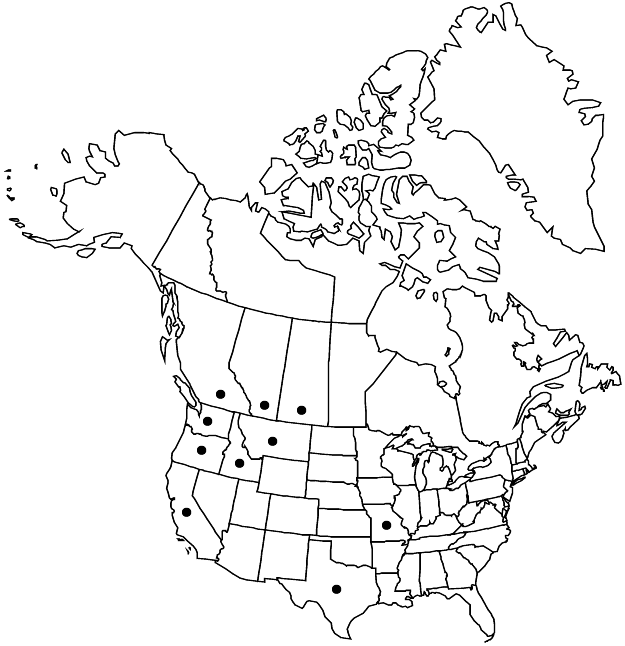Silene conoidea
Sp. Pl. 1: 418. 1753.
Plants annual; taproot slender. Stems erect, simple or with ascending branches, (20–)40–100 cm, coarsely puberulent, stipitate-glandular, viscid distally. Leaves: mid and proximal stem pairs connate, blade 1–several-veined, oblanceolate to narrowly lanceolate, (3–)5–12 cm × (3–)8–15 mm, apex acute, veins parallel; basal leaf blades oblanceolate and ± obtuse, sparsely to moderately puberulent on both surfaces, rarely subglabrous. Inflorescences several–many-flowered, open, bracteate; bracts resembling leaves but smaller. Pedicels ascending, straight, equaling or longer than calyx, densely stipitate-glandular, viscid. Flowers: calyx prominently 25–30-veined, lobed to 1/3 its length but splitting further in fruit, umbilicate, narrowly conic in flower, conic-ovoid and inflated in fruit, 20–30 × to 15 mm, margins dentate, puberulent and stipitate-glandular, lobes 5, lanceolate, narrow, acuminate, veins parallel; corolla deep pink, clawed, claw equaling or longer than calyx, limb slightly lobed or unlobed, broadly obovate, spatulate, 8–12 mm, appendages 2–4 mm, lobed or dentate; stamens equaling claw; stigmas 3, equaling claw. Capsules flask-shaped, 15–20 mm, opening by 6 recurved, lanceolate teeth; carpophore to 2 mm. Seeds brown, reniform, 1.2–1.8 mm broad, tuberculate. 2n = 20, 24 (Europe, Asia).
Phenology: Flowering early summer.
Habitat: Dry waste places, roadsides, arable land
Elevation: 0-1000 m
Distribution

Introduced; Alta., B.C., Sask., Calif., Idaho, Mo., Mont., Oreg., Tex., Wash., Eurasia.
Discussion
Similar to Silene conica but larger in all its parts, S. conoidea is a rare adventive weed with showy flowers and inflated fruiting calyces.
Selected References
None.